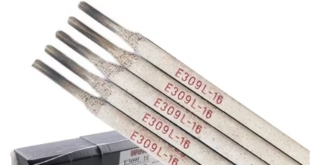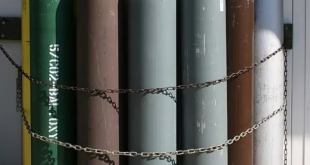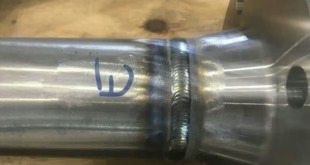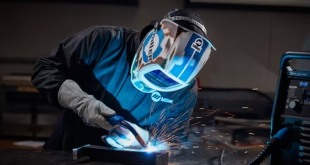Parts of a Weld – Fillet vs. Groove Welds
Introduction
Welding is a fundamental process used in various industries to join two or more pieces of metal to create a structurally sound and reliable connection. Understanding the components of a weld is crucial for ensuring the weld’s strength, integrity, and safety. This article will focus on the key parts of two common weld types: fillet welds and groove welds, accompanied by diagrams to illustrate their structures.
Fillet Vs. Groove Weld Comparison
Fillet welds are simple, triangular welds suitable for various applications, while groove welds offer greater strength and precision through beveled edges and controlled geometry. Fillet and groove weld components are critical in welding, influencing strength, penetration, and overall quality of welded joints.
Fillet Weld
- Face: The face of a fillet weld is the visible surface on the exterior of the welded joint. It’s the area where the weld bead is deposited, and it is typically triangular in shape.
- Root: The root of a fillet weld is the intersection between the two pieces being joined. It is the deepest point of the weld and is essential for the weld’s strength.
- Toe: The toe of a fillet weld refers to the point where the weld face meets the base metals on either side. Properly shaping and controlling the toe is crucial for a high-quality weld.
- Throat: The throat of a fillet weld is the shortest distance from the root to the face. It is a critical measurement that determines the weld’s strength. A properly sized throat ensures a strong and reliable connection.
- Leg Length: The leg length of a fillet weld refers to the distance from the root to the toe. It plays a vital role in determining the weld’s size and its ability to carry loads.
Specifications for Fillet Welds:
- Leg length: Specifies the minimum size of the fillet weld.
- Throat thickness: Specifies the minimum distance from the root to the face.
- Weld size: The combination of leg length and throat thickness determines the overall weld size.
- Weld angle: Fillet welds can have different angles (e.g., 45 degrees), which must be specified in the welding procedure.
- Weld pitch: Refers to the distance between individual fillet welds in multi-pass applications.
Advantages and Disadvantages of Fillet Welds:
Advantages:
- Simplicity: Fillet welds are relatively easy to produce, making them suitable for a wide range of applications.
- Minimal preparation: They often require less base metal preparation compared to groove welds.
- High-speed welding: Fillet welding can be completed more quickly than some other welding techniques.
- Versatility: Fillet welds can be used in various joint configurations, including T-joints, lap joints, and corner joints.
- Good for lightweight materials: They are well-suited for joining thinner materials.
Disadvantages:
- Limited strength: Fillet welds may not provide as much strength as groove welds for heavy loads or critical applications.
- Inconsistent quality: Achieving a consistent, high-quality fillet weld can be challenging, especially for inexperienced welders.
- Limited penetration: Fillet welds may not fully penetrate thicker materials, leading to reduced joint strength.
- Less control: The shape of the fillet weld is less controlled compared to groove welds, which can affect the weld’s strength.
- Limited use in thick materials: Fillet welds may not be suitable for thick materials or highly stressed joints.
Groove Weld
- Bevel Angle: A groove weld typically involves beveling the edges of the base metals before welding. The bevel angle is the angle formed at the edge of each base metal, creating a groove that allows for better penetration and weld quality.
- Root Face: The root face is the distance between the root and the joint’s centerline. Properly controlling the root face is essential to achieving a strong and reliable groove weld.
- Root Opening: The root opening is the gap or space between the two pieces of base metal at the root of the joint. It is crucial to maintain the proper root opening for the desired weld penetration and strength.
- Weld Face: Similar to fillet welds, the weld face in a groove weld is the exposed surface where the filler metal is deposited. This is the visible part of the weld on the exterior of the joint.
- Groove Angle: The groove angle is the angle formed by the beveled edges of the base metals. It affects the depth and width of the weld and must be carefully specified for the weld to meet design requirements.
Specifications for Groove Welds:
- Groove angle: Specifies the angle formed by the beveled edges of the base metals.
- Root face: Specifies the distance between the root and the joint’s centerline.
- Root opening: Specifies the gap or space between the base metals at the root.
- Weld size: The combination of groove angle, root face, and root opening determines the overall weld size.
- Weld penetration: Specifies the depth to which the weld should penetrate the base metals.
Advantages and Disadvantages of Groove Welds:
Advantages:
- High strength: Groove welds can provide high joint strength, making them suitable for heavy-duty applications.
- Precise control: The geometry of groove welds can be precisely controlled to meet design requirements.
- Deep penetration: They offer better penetration in thick materials, ensuring reliable connections.
- High-quality finish: Groove welds often result in a smoother, more aesthetically pleasing surface.
- Suitable for critical applications: Groove welds are commonly used in applications with stringent structural requirements.
Disadvantages:
- Complexity: Preparing base metals with beveled edges and root faces can be more time-consuming and complicated.
- Skill requirement: Groove welding demands a higher level of skill and experience to ensure the proper configuration and penetration.
- Slower process: Groove welding can be a slower process compared to fillet welding.
- Material thickness limitations: Groove welding is typically used with thicker materials, making it less suitable for thin sheets.
- Increased consumable usage: Groove welds require more filler metal and heat input.
FAQs
Are groove welds stronger than fillet welds?
Groove welds are often stronger than fillet welds, especially in applications requiring high load-bearing capacity due to their deeper penetration and controlled geometry.
Why are fillet welds preferred over groove welds?
Fillet welds are preferred in certain cases for their simplicity and ease of execution, making them suitable for lightweight materials and non-critical applications.
What type of joint is commonly used in fillet welds?
Fillet welds are commonly used in T-joints, lap joints, and corner joints.
What determines the size of a groove weld?
The size of a groove weld is determined by factors such as the groove angle, root face, and root opening specified in the welding procedure.
What is the maximum thickness of a fillet weld?
The maximum thickness of a fillet weld depends on various factors, including the material being welded and the welding process used. There is no fixed maximum thickness for all situations.
Which section of a fillet weld is weakest?
The throat of a fillet weld is typically the weakest section, as it is the shortest distance from the root to the face and influences the weld’s strength.
What is the effective length of a groove weld?
The effective length of a groove weld is the distance over which the weld is applied to the joint and is specified in welding procedures.
Why are weld joints grooved?
Weld joints are grooved to provide a proper space for the filler metal and to ensure deep penetration, resulting in a strong and reliable welded connection.
Conclusion
Understanding the various parts of a weld is essential for welders and engineers alike. For fillet welds, the face, root, toe, throat, and leg length are critical components that determine the weld’s strength. Groove welds, on the other hand, involve components such as bevel angle, root face, root opening, weld face, and groove angle, which affect the weld’s penetration and quality.
Whether you’re a professional welder or someone looking to comprehend the inner workings of welding, these components are essential to creating strong, safe, and reliable connections. Properly controlling and inspecting these components during the welding process is key to ensuring the integrity of the finished weld and its suitability for its intended application.
 Welding of Welders All about Welding and Welders
Welding of Welders All about Welding and Welders




